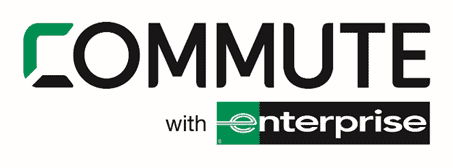With Wisconsin experiencing record low unemployment levels, businesses across the state are struggling to fill open positions and, in many cases, to retain the employees they already have. 
One challenge many employees face is reliable transportation to their places of work. For others who are currently not employed but would like to be, the lack of transportation options is often a major contributor to them remaining out of the workforce.
To help both existing employees and potential employees who are facing transportation challenges, the Madison Region Economic Partnership (MadREP) is partnering with Commute with Enterprise to provide an innovative and sustainable shared mobility option: vanpooling.
“MadREP’s pilot will provide $500 per van per month for up to three van pools to help underwrite the cost to our partners and participants,” said MadREP President and CEO Jason M. Fields. “Each vanpool is customized to the specific needs of its five or more vanpoolers. The remaining cost will be covered by company, the vanpool riders, or a combination of the two as determined by each company.”
“With record low unemployment and in an effort to keep their shifts full, many employers are looking into providing benefits they may not have considered before,” said MadREP V.P. of Talent & Education Gene Dalhoff. “Our pilot project is meant to provide an incentive to companies to explore the feasibility of using employee van pools to help with employee retention and attraction.”
“Dane County’s rapid growth requires innovative solutions to address public transportation needs outside of Madison and I applaud MadREP’s pilot workplace vanpooling program to open up more options for employers to connect their employees to work in a way that is better for the environment,” said Dane County Executive Joe Parisi. “Making these connections will help Dane County stay on track with our climate action plan to reduce emissions and ensure that Dane County continues to be a great place to live and work.”
Companies and vanpool groups can choose a qualifying vanpool vehicle from Enterprise’s selection of makes and models that includes crossovers, SUVs, minivans, and large passenger vans. Vanpoolers may choose to upgrade their vehicles with optional high-end features such as satellite radio, in-vehicle Wi-Fi service and power ports for individual seats.
Commute with Enterprise also provides 24-hour roadside assistance, liability insurance and maintenance. And as part of Enterprise’s Complete Clean Pledge, Commute with Enterprise provides best practices for cleaning and Complete Clean Starter Kits for new Commutes to ensure vehicle cleanliness.
“This pilot project, although limited in size, is meant to serve as a proof of concept to help demonstrate the benefits to companies of such a program,” said Fields. “Our goal will be to secure additional funds to grow the program exponentially over the next 12-24 months.”
Companies and commuters in the Madison Region interested in joining the program can visit commutewithenterprise.com/commute/en/partners/madrep.html.



